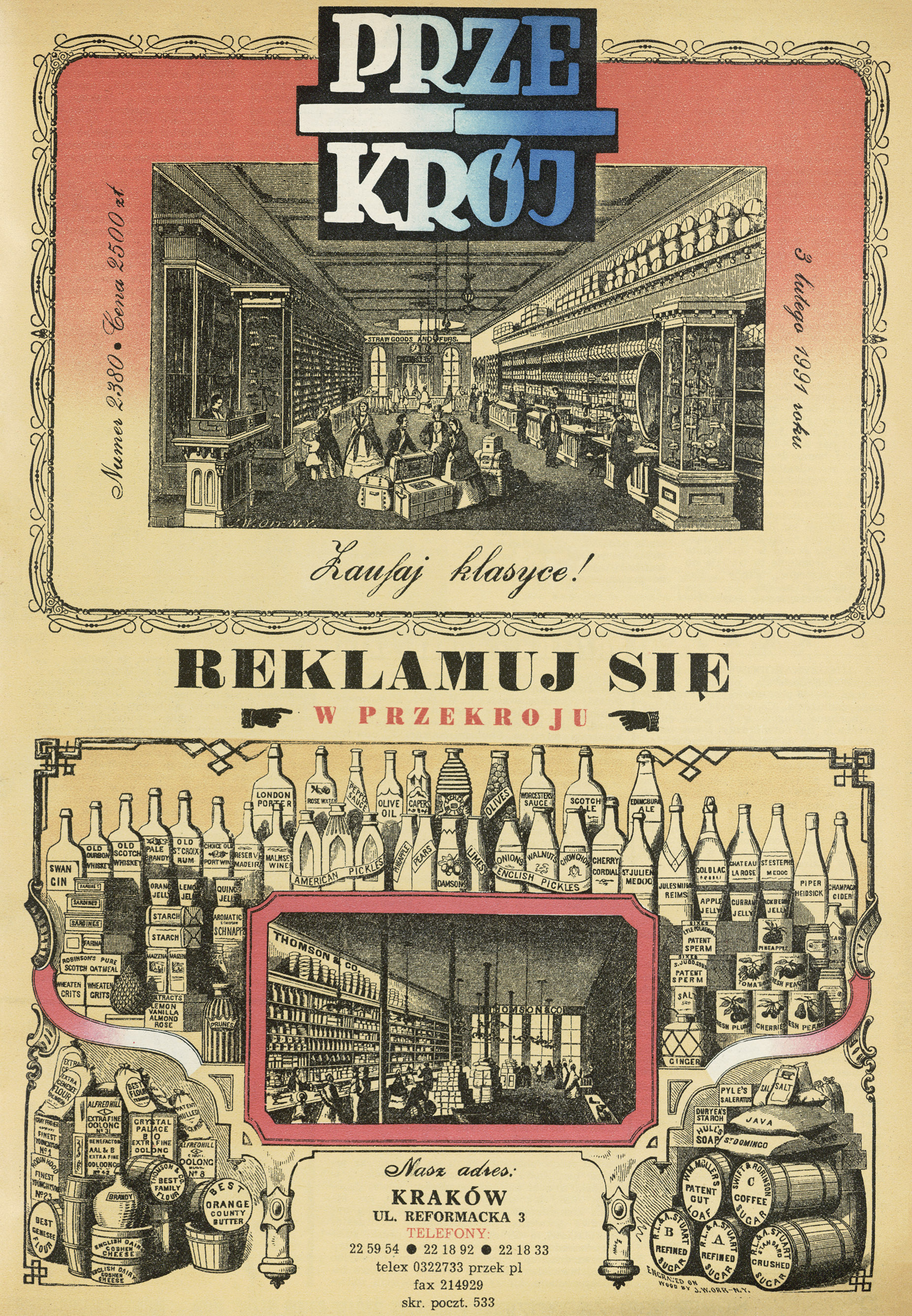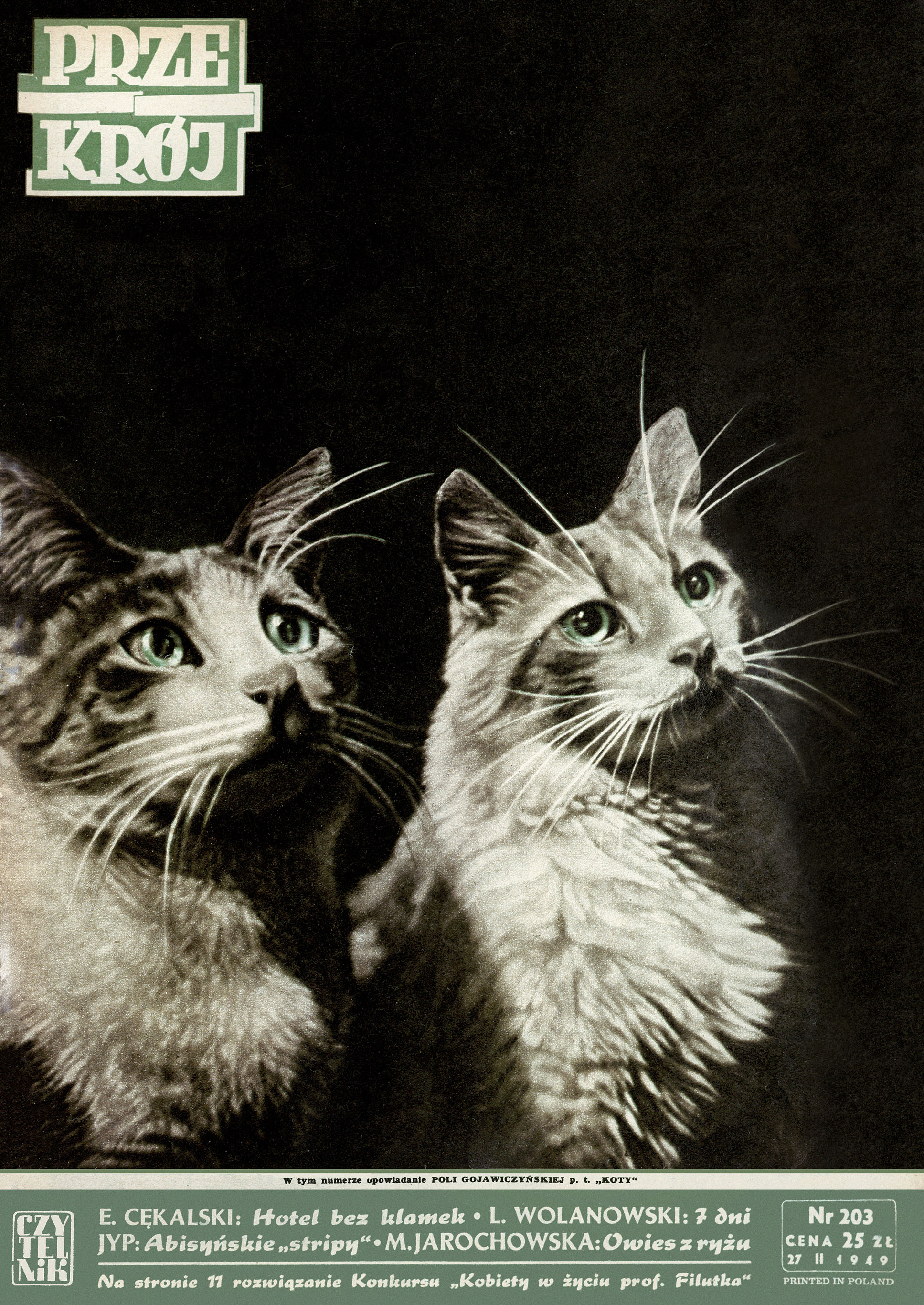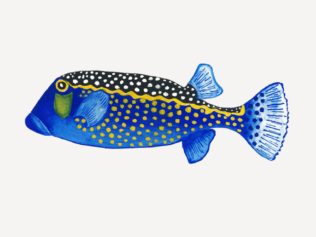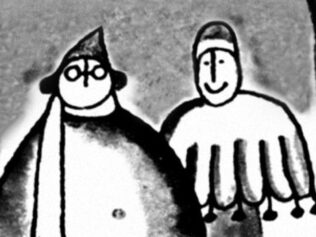
This cover could be a work by Terry Gilliam of Monty Python fame. It is a more polite version of the same style – conservative pen strokes, psychedelic colours and subversive content. “Advertise in Przekrój” it proposes, asks, commands even, with no shame. Buy the largest possible advert.
It is 3rd February 1991 and Poland is undergoing a systemic transformation. The changes come thick and fast: a typical street, which until recently was grey, now sparkles with all the colours of the rainbow; store shelves bulge with longed-for goods. Shortages are over. Let excess begin! The streets and squares of the whole country are overflowing with goods carried in car boots. An orgy of free trade is taking place on camp beds.
No one escapes the insanity. The well-behaved “Przekrój” lifts its voice and joins the chorus which, in a falsetto, screeches “Buy!”
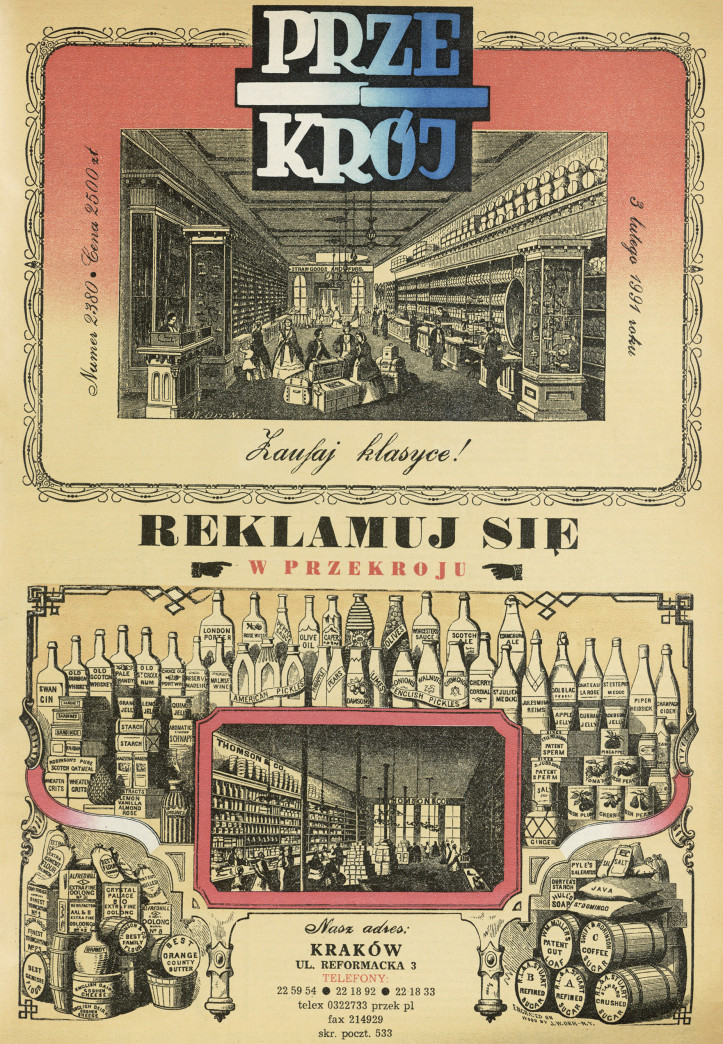
Even Pewex and Baltona, the import-export companies (operating only in foreign currencies), are fighting for clients. The loss of their monopoly on trading the stuff of people’s dreams has forced them to start trading in Polish złotys. Back then, everything Western streamed into us, displacing the ugly and unwanted goods eastwards. In Warsaw, the premiere of the musical Metro took place, significantly shortening the distance separating Broadway and the centre of the capital, even if not literally, then at least in the imagination of the Poles who were transforming along with their country. Fairly soon, all distances would be shortened, albeit not literally either. By the end of the year, Poland would be connected to the internet!
Now it is February. Cold and dark. The thoughts of freezing Poles, focused at that time mainly on the US, turn towards warm countries; one in particular. The same one to which American bombers are heading. For the last week, the Gulf War has been underway.
Several EF-111 and EA-6 aircraft take part in each wave of air strikes, disrupting the Iraqi radars. They capture the signal of a radio station, analyse it and choose the appropriate counter-signal, causing the appearance of a bright, uniform fog of pseudo-objects on the screen that prevents the allied aircraft from being spotted. The bombers themselves fly low – approximately 30 metres above the ground – and they continually check the accuracy of their course with sonar sensors. The payload of bombs dropped by three B-52 bombers covers a 2.5 x 1.5 kilometre area with craters that are 15-metres wide and 10-metres deep. The shrapnel from these bombs is deadly within a range of 360 metres from the bomb site. Laser targets allow the missiles to change direction, perform U-turns. No attack has ever been so precise before. It is the first highly computerized war in the history of human warfare – and certainly the most expensive. A Patriot missile costs $700,000 dollars; a Tomahawk, $1.3 million! At that time, one dollar was worth over 10,000 Polish złotys, the equivalent of four copies of “Przekrój”. One laser-guided bomb was equal to two million copies of “Przekrój”!
Even then, the fact that NATO countries had to a large extent armed Iraq was openly written about. But that is just the beginning. In the majority of Western countries, public opinion supports the use of military force against Saddam Hussein’s state. But in France, a problem arises. Beurs, French-born youth of North African origin, start to demonstrate their sympathy for the Iraqi leader. An anti-American song becomes a hit. France is raging. Bolivia also expresses its opposition. It is one of very few countries that officially condemns the conflict. The union leaders of this country demand that their peasants increase the production of coca, in order to take revenge on the Americans. The majority of Bolivia’s cocaine ends up with drug addicts in the US.
Drawing on world reports, Beata Wilk pens a several-page portrait of Saddam, one of the first in the Polish press. The article is illustrated with photographs from his family album: Saddam playing on the grass with his daughter; his smiling wife holding a glass of wine; his children all dressed up, posing on children’s chairs. Many more years will pass before the world will see the photograph of the tyrant’s arrest – with overgrown beard, filthy, leaving his underground hiding place.
So as not to be too gloomy, “Przekrój” publishes an interview with an undisputed star of the times, Benny Hill. To change things up a bit, the interview is decorated with photos of ladies’ bottoms in Brazilian knickers, which were phenomenally fashionable at the time. The comedian is in an excellent mood. His popularity is spreading across the world, with fan clubs in the US and the USSR. His ribald humour even conquers Hong Kong. Polish children hum the theme tune from his show.
Pamela Anderson, clad in her red swimwear, runs across Polish television screens in Baywatch. More discerning viewers watch Twin Peaks. We are chasing America and we’re becoming culturally liberal. All that in spite of the fact that the number of priests is rising! There are more than 25,000; 5000 more than a decade ago. In Poland, there is one priest per 1280 believers; in the US one to 1650. According to data from the Vatican, Rwanda, Burundi, Zaire and India have also recently seen a growth in the number of priests.
There are more and more priests… and casinos. Monte Carlo and Poland have the most. The Western media warns us that this is the effect of mafia investments from West Germany. Their favourite modus operandi is bribery. Fears are emerging that the officials of the last two governments didn’t resist them. Fortunately, Radio Maryja is launched and quickly starts the fight to return to Christian values!
We must defend ourselves so as not to spoil ourselves, as in the example of Japan. Page seven of the weekly magazine provides shocking revelations from the Land of the Cherry Blossoms. Production has begun of dolls that could soon replace women. The robot toys have a range of functions: they can bow, wish you a good day, and the more advanced ones apologize when you slap their cheeks. The dolls are extremely popular with young Japanese men.
In Poland, the Polish washing powder, Pollena 2000, made with “Western ingredients” is hugely popular. “Przekrój” is full of advertisements for it. There’s also an advert for a Casio music keyboard. Pewex is pushing that. Barbara Hoff is persuading men to wear pastel-coloured jackets straight out of American television series, of which there are many in the TVP [the public television broadcaster – ed. note] listings. “Let’s go for colour,” concludes Hoff.
The whole of 1991, and not just the cover, could be by Monty Python. It’s hard to believe it wasn’t!


